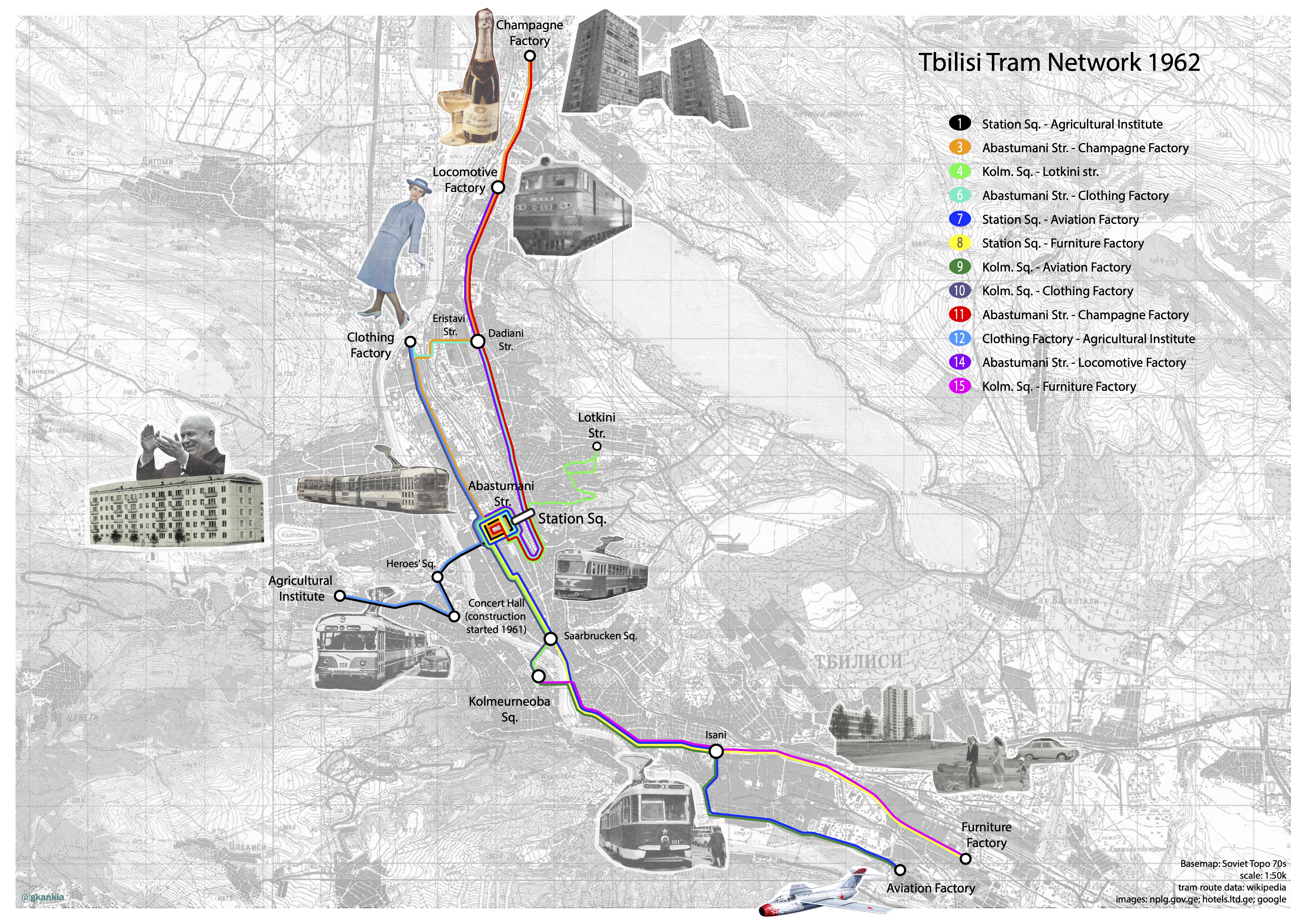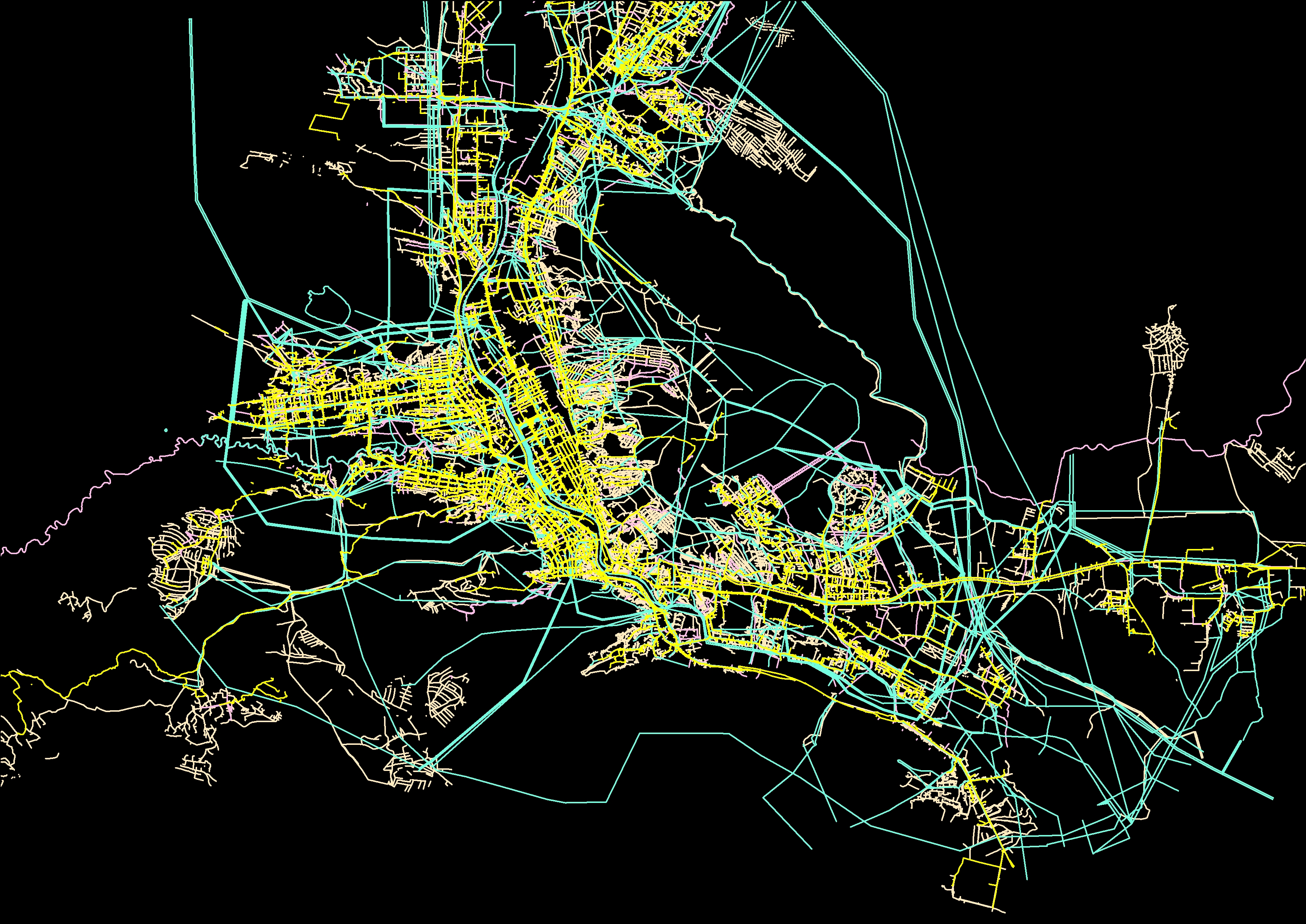Urban Infrastructures
The [in]visibility of networked infrastructures and [their] interruption

Tbilisi Tram Network in early 1960s
Starting from the early 1950s, soviet mass housing projects, concentrated in so called “mikrorayons” in the outskirts of the city, were connected to major industrial zones primarily by public transit, as access to private vehicle to general population was limited.

Infrastructure Interruption and Networked Infrastructure
in Contemporary Tbilisi
After regaining independece from the Soviet Union and twenty years into the transition process, urban network infrastructures in Tbilisi, such as electricity, water, gas or communication have been gradually splintered (Graham and Marvin, 2001) over the last few decades to conform to market-based approach of service provision. They are owned, maintained and delivered to citizens by private/semi-private companies. This in turn, further limits the level of accessibility to quality networked infrastructure services for the urban poor.

A. Water Provision in Tbilisi
As a result of neoliberalization of urban infrastructure services over the last couple of decades, infrastructure interruption, such as water or electricity cuts have become part of the everyday life of urban residents.

Service cuts are usually due to the undermaintained infrastructure, system overload or other repairs. It turns out to be economically non-profitable for the private company in charge of water provision to invest in long-term infrastructure improvement. Instead it tackles frequent system failures with small-scale interventions. The natural monopoly given up by the central authorities who delegated their responsibilities to a private company, gives the entity much needed freedom to maximize profits without the fear of losing customers. Unlike picking their preferred product at a neighbourhood market, urban residents are not given any other choice but to stick with the existing service provision that is offered to them. As city's water and sanitation networks were planned with much lesser urban density in mind during soviet times, system overload due to increasing urban density can be another reason to explain constant infrastructure failures. The visualizations below intend to shed some light on daily service cuts of water provision by Tbilisi districts.
Data:Wikipedia; Tbilisi City Municipality & GWP









